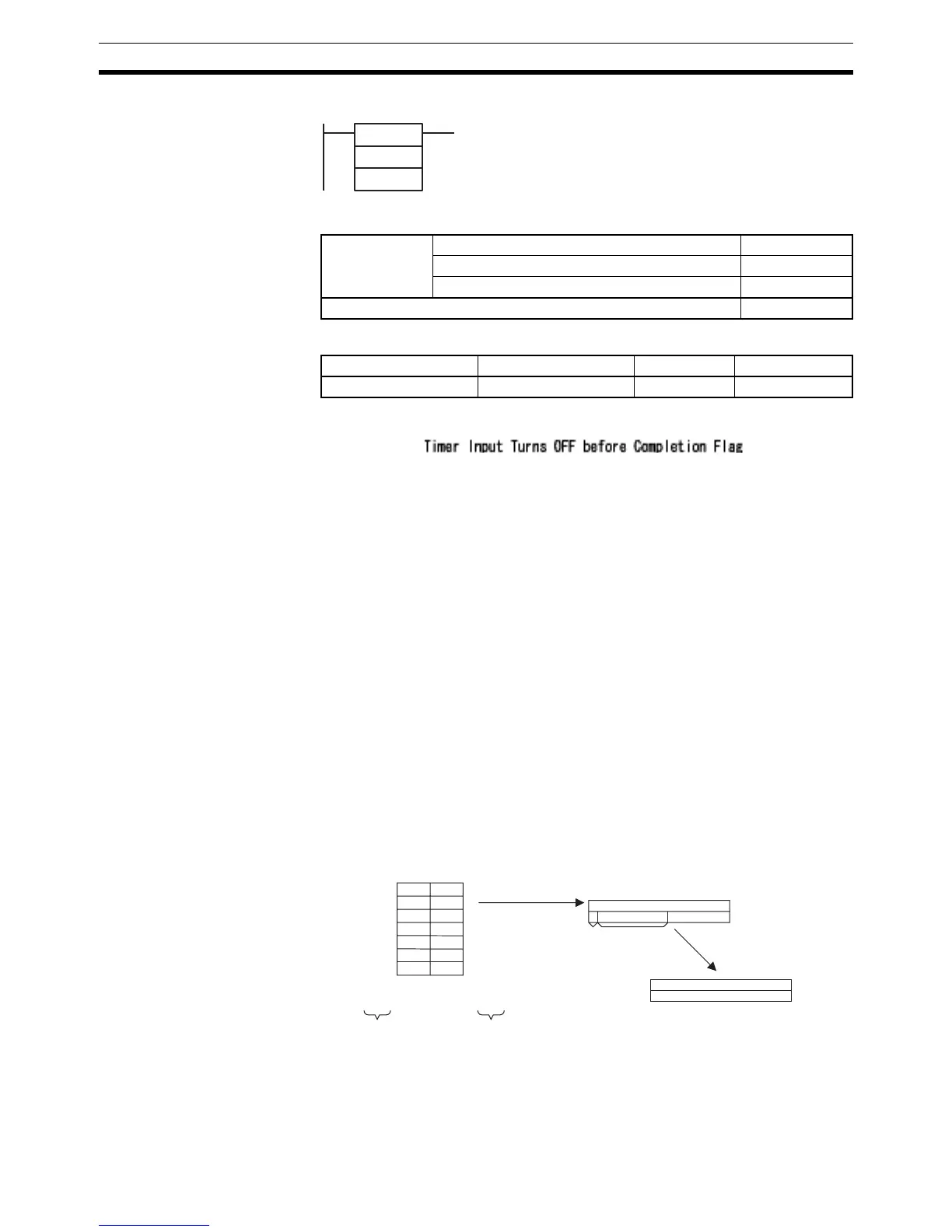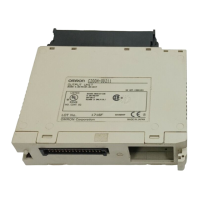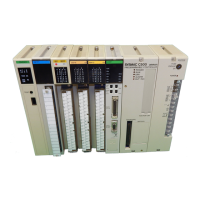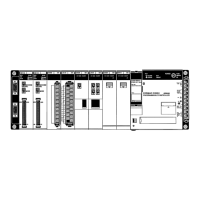646
Floating-point Math Instructions Section 3-15
Ladder Symbol
Variations
Applicable Program Areas
Operand Specifications
Description FVAL(449) converts the specified ASCII text number (starting at word S) to a
32-bit floating-point number (IEEE754-format) and outputs the result to the
destination words starting at D.
FVAL(449) can convert ASCII text in decimal or scientific notation if it meets
the following conditions:
Up to 6 characters are valid, excluding the sign, decimal point, and exponent.
Any characters beyond the 6th character will be ignored.
• Decimal Notation
Real numbers expressed with an integer and fractional part.
Example: 124.56
• Scientific Notation
Real numbers expressed as an integer part, fractional part, and exponent
part.
Example: 1.2456E-2 (1.2456
×10
-2
)
The data format (decimal or scientific notation) is detected automatically.
The ASCII text must be stored in S and subsequent words in the following
order: leftmost byte of S, rightmost byte of S, leftmost byte of S+1, rightmost
byte of S+1, etc.
FVAL(449)
S
D
S: First source word
D: First destination word
Variations Executed Each Cycle for ON Condition FVAL(449)
Executed Once for Upward Differentiation @FVAL(449)
Executed Once for Downward Differentiation Not supported.
Immediate Refreshing Specification Not supported.
Block program areas Step program areas Subroutines Interrupt tasks
OK OK OK OK
2D 20
20 31
32 33
2E 34
35 36
37 38
00 00
−
SP SP 1 2 3 . 4 5 6 7 8
(2D)(20)(20)(31)(32)(33)(2E)(34)(35)(36)(37)(38)
15 87 0
−123.456
1110100101111001
1100001011110110
D
D+1
1110100101111001
1100001011110110
15 0
Decimal notation
Exponent
Spaces are
ignored during
conversion
Sign
32-bit floating-point data
If there are more than 6 digits, the 7th
and higher digits are ignored.
(Digits do not include the sign, decimal
point, and exponent characters.)
Conversion of ASCII text number to
32-bit floating-point data
Stored in D and D+1.

